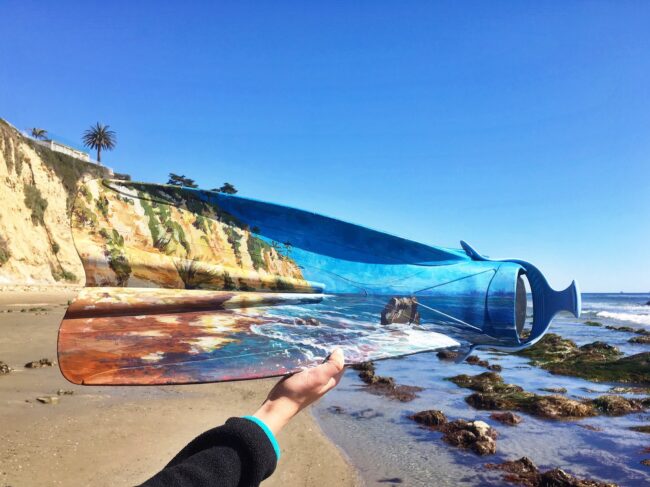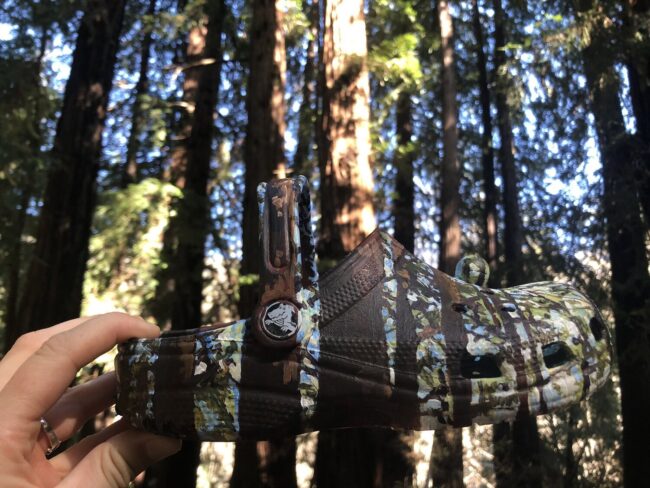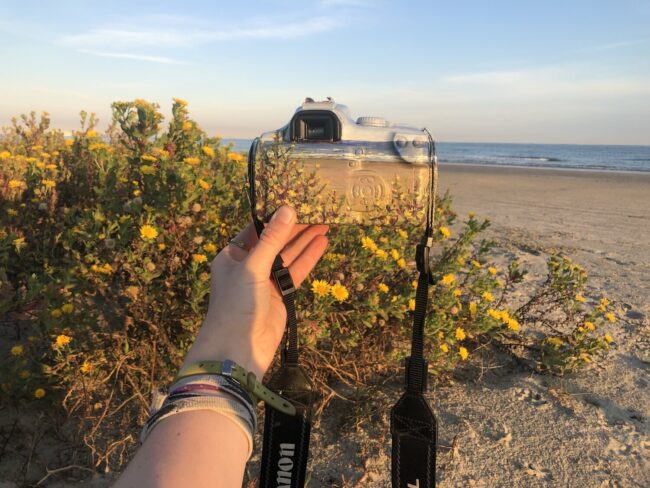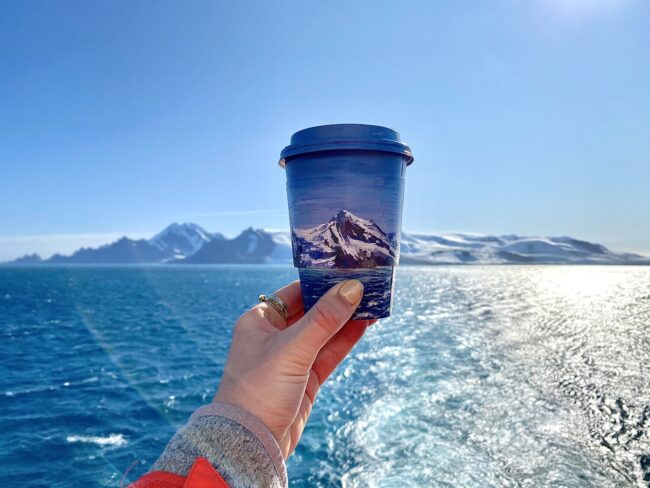A key step to raising awareness on conservation and sustainability is ensuring that your actions line up with your advocacy. As an eco-artist, Mariah Reading quickly recognized this and realized that advocating for sustainability needs to start with taking accountability for her own consumption practices. Originally trained as a landscape painter in Maine, Reading became aware of the fact that the materials she was using harmed the landscapes that inspired her. In order to minimize her waste contribution, Reading began repurposing cardboard, recycling water, and eliminating plastics. Most notable of her conservation efforts is her use of found objects as canvases, which has now become her trademark as an eco-artist.
Reading collects found objects and trash that pollute national parks and paints them to blend into the environment they were found in. This project, which she calls Recycled Landscapes, began in 2016. Starting with Acadia National Park, Reading commenced painting on park debris to bring attention to the preservation and protection of the lands on the year of the U.S National Park Centennial. Five years later, she continues to visit parks with the goal of completing the collection in all 63 U.S National Parks. While aiming to reach this personal goal, Reading also does installations, commissions, and sells prints.
By transforming an often overlooked object, Reading hopes to change the way people see consumption and help them realize that complacency is no longer an option in this rapidly declining state of the world. She also hopes to highlight the accessibility within the arts, showing that you don’t need fancy or expensive material to create something impactful.








